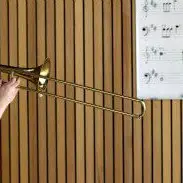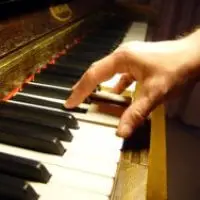| Back to Back Issues Page |
 |
|
The Piano Player, Issue #58 Music Theory for Pianists June 05, 2021 |
Tips & Tools for Piano Players: Learn Music TheoryHi, and welcome to "The Piano Player" the newsletter from OnlinePianoCoach.com. In each issue, you will get tips and tools about playing and learning the piano. If you like this newsletter, please share it with your piano-playing friends. Or, if a friend forwarded this to you, and if you like what you read, make sure to subscribe (and pick up your gift) by visiting
The Piano Player Newsletter
"The Piano Player"-- Issue #58, June 2021 In This Issue:Music Note Symbols: Note Values Learn About Music Theory for PianistsHello,Digging deeper and learning more about the music we study is a great idea. And one of the tools we use is music theory. In this issue, I'll tempt you with some bits and pieces of music theory. There are, of course, tons of more lessons on OnlinePianoCoach.com, but these are just a start to perhaps make you more curious to learn more about the cogwheels and inner workings of music! Enjoy! Maria
Music Note Symbols: Note Values
Did you know that a single musical note can show us two things? How high or low (pitch) the sound is. How long or short (duration) the note is. Learn to read piano notes! Here is a crash course in basic music theory and note reading.
Music Intervals for Beginners
 Why do I need to know about intervals? There are many reasons to learn about intervals. For example:
Why do I need to know about intervals? There are many reasons to learn about intervals. For example:
Recognizing intervals makes it easier to learn to read music and to sight read sheet music. Understanding intervals also makes it easier to analyze the music, and to understand the harmony of a piece. And knowing the patterns of the intervals makes it easier even to memorize a piece, or understanding the make-up of a chord. Good news is- learning to master intervals is easy, especially for pianists!!!
What is Diatonic Harmony?Diatonic Harmony is the chords that are using the notes of a particular major or minor scale. It is useful especially for pianists to know since it is easy to use these chords to, for example, add chords to a melody in major or minor. This lesson is not really for beginners, but for anyone who's interested in digging deeper into music theory and how to analyze chords. Have fun!
Got Piano Questions?
Ask your piano related questions here:
Piano Playing Q & A
Piano Question of the Month
B-sharp vs. C ??I'm a retired pilot who took up the piano a few months ago. I have always loved piano music and it has always been a dream to learn to play but my work schedule was prohibitive. I want to play just for my own relaxation and to keep my mind actively challenged and learning to play has provided ample challenge.I want to play the slower, simpler versions of some of the easier classical pieces and just started on Beethoven's Moonlight Sonata. Here is my question. When a B sharp is indicated is that really a C? When I do that is seems to sound okay. If so, why would he indicate a B sharp instead of a C natural(since all other C's are sharp). Thanks for your time. Brian
Piano Staff PaperPrintable Staff PaperAs a musician you often need printable staff paper quickly.In for example music theory and piano lessons it's important for both the teacher and the student to have music manuscript paper ready to jot down exercises, note names, ideas, lesson notes, scales etc. And yeah, I created these free printable staff papers without my logo or copyright. Just plain. Enjoy!
Comments? Ideas? Feedback?
Your Online Piano Coach, |
| Back to Back Issues Page |


 I'd love to hear from you. Just reply to this newsletter and tell me what you think or what you'd like to read more about.
I'd love to hear from you. Just reply to this newsletter and tell me what you think or what you'd like to read more about.